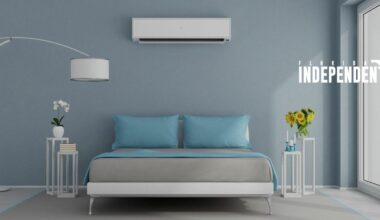You may feel very proud of yourself for having done a thorough cleaning job at home, getting rid of dust and dirt, doing laundry, and organizing things everywhere. Your floors are shining, your carpets have been vacuumed, the bathrooms smell clean, and even the kitchen counters sparkle.
If that was not clean enough, you and your loved one have been following the CDC recommendations in order to stay safe during the current pandemic: frequently washing or sanitizing your hands, wearing a mask when outdoors, covering your nose and mouth when sneezing and keeping socially distant outside the home. You are also taking your temperature frequently and isolating anyone who shows symptoms of the disease.
However, you cannot help but wonder if all these actions are enough to decrease airborne disease in your home or if there are any further steps you can take to minimize the risk of disease for your loved ones at least when you are all at home. Read on to find some interesting ideas on how to minimize airborne transmission of disease within your home.
Table Of Contents
Use an Air Purifier
Air purifiers are a great way to remove airborne bacteria and viruses. Even if you have a great ventilation system at home, adding an air purifier will make it even more efficient. Additionally, this will help your home ventilation system last longer because there will be less wear and tear on the filters. Look for an air purifier that uses specialized technology such as UV-C light for best results. If in doubt, call your AC specialist to find out what air purifier will work best with your HVAC unit.
During months of extreme weather, people tend to keep windows sealed and either the heat or AC on at full blast. The air gets stagnant, and recycled air can harbor airborne allergens and bacteria. An air purifier in the rooms where you spend the most time will have air circulated several times per hour and small particles such as microbes, dust, pollen, pet dander, and mold spores will be removed.
Disinfect the Problem Areas of Your Home
Bathrooms and kitchens tend to be the most contaminated spots in any home. A good cleaning solution that is also good for the environment can be made at home. Mix a small amount of vinegar with a cup of water and add a bit of lemon juice. Use a spray bottle to spray countertops and other areas. It will leave surfaces smelling great, and will also work as an antibacterial against infections, the flu, and other airborne contaminants.
Use UV Lights
When you use the germicidal type of UV light that is capable of inactivating microorganisms, you will be getting rid of viruses and bacteria in your home as well. Look for a device that uses ultra-violet light and simply spread the light over surfaces you wish to clean or to maintain clean. The longer you spread the light in those areas, the greater the amount of those microorganisms you will destroy. Besides countertops, think electronic devices such as computer keyboards, cell phones, tablets, and also doorknobs and handles.
Wash Large Items
When you think of laundry you probably think about the piles of clothes that seem to accumulate endlessly. However, larger items tend to allow viruses and other airborne contaminants to live on their surfaces for several hours. And if the fabric is porous as with sheets, towels, blankets, and quilts, you should make sure to wash those items.
Change Your AC Air Filters Regularly
An easy way to ensure that your home has clean, fresh air is by changing the filters in your AC unit and furnace. Children, the elderly, and anyone suffering from asthma or allergies will benefit from having the air in your home constantly circulating and trapping pollen, dust, mold spores, and other particles. Plus, you’ll be doing your expensive equipment a favor by providing it with new filters on a regular basis and allowing it to work as it should.
How often do your filters need to be replaced?
Many times, when you go look at your air filter, it will be plainly simple for you to realize that it is dirty and completely clogged. Other times you may be in doubt as to whether the time to change it has arrived or if it can wait a bit longer. If in doubt, remove it from the unit and hold it up to the light. Does it allow light to pass through? If it does, you can wait a little longer before replacing it. Otherwise, do it now.
Another way to determine how frequent your filters need to be replaced is to follow the manufacturer’s recommendation. If it says every 2 to 3 months, set an alarm in your phone to remind you that the time is up and don’t leave the life of your AC unit to chance.
Keep in mind that certain filters will trap more particles than others. Depending on their MERV rating, you will have filters that trap more dirt and others that let more airflow. Some filters, such as 14x30x1 non-pleated panel air filters will capture particles between 3 and 10 microns in size. Which one works best for you, will depend on your particular piece of equipment.


